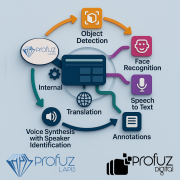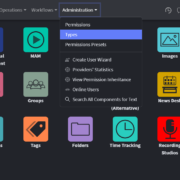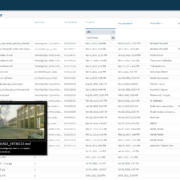For immediate release – 19 December 2023, Sofia, Bulgaria – The Bulgarian National Radio has significantly upgraded its infrastructure by investing in the Profuz LAPIS digital asset management system to help integrate its enormous data workflows. Profuz Digital’s customised scheduling module which utilises the LAPIS software was implemented across all of BNR’s national and regional centres, which includes the BNR’s world service Radio Bulgaria. Data at the BNR is now speedily exchanged and aligned in LAPIS, across the entire organisational infrastructure in Bulgaria, that also extends to its international outreach.
Established in 1935, the Bulgarian National Radio (BNR) remains the largest public broadcaster in Bulgaria. It has two national channels, nine regional stations and a multilingual channel which broadcasts providing news in various languages ranging from Albanian, Romanian, English, French, German, Greek, Russian, Spanish, Serbian, and Turkish. The BNR is the only radio operator in the country that broadcasts in FM, AM and short, medium and long waves, including DAB. The BNR also maintains a valuable historical voice archive record of Bulgarian culture.
The BNR required a powerful platform that could handle colossal amounts of information and extensive news-related activities that mainly involves coordinating news reporters out on the field. The organisation specifically chose Profuz LAPIS for its unique ability to centralise complex data activities securely and efficiently across all the BNR’s stations, including online streaming sites, radio websites, sound media, channels and multiple emissions.
A major advantage of having LAPIS is that it is an open and agile system that sits comfortably within an existing infrastructure. LAPIS is designed to adapt and evolve according to the changing needs of the organisation. At the BNR, LAPIS interfaces with all of the organisation’s legacy systems including BNR’s existing digital audio production and playout platform. Within the BNR, all data exchanges and the entire news preparation process takes place within LAPIS, with legacy systems working alongside it for broadcast playout.
The open cloud-native LAPIS software ensures organisations can build future-proof workflow infrastructures that are capable of virtually unlimited expansion. LAPIS allows connectivity through APIs and protocols to various data sources such as RSS, News Feeds, third party MAMs, Amazon S3, Google Drive, Dropbox, plus others, and can be deployed on physical, virtual or cloud environments such as AWS.
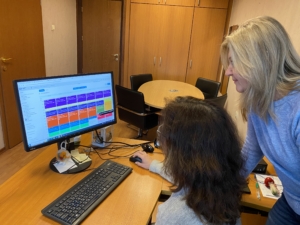
“Bulgarian National Radio wanted us to help them unify all of their data handling and to unite all radio stations into using one single system. This way, they could also be kept aware of all the news that was being produced at any given time across all the departments.” Kamen Ferdinandov, CTO of Profuz Digital explains, “Our open LAPIS technology is versatile, and everything now runs in LAPIS at the BNR with all data and processes centralised seamlessly.”
“It was very important to the BNR that everyone working there could access and share relevant material and be kept informed about what everybody else was doing.” Kamen continues, “What LAPIS was able to achieve, was not available in alternative solutions. The LAPIS module was designed and specifically customised for the BNR to handle vast amounts of radio programming data in over eleven languages to serve both regional and world-wide audiences.”
Kamen further outlines, “LAPIS is tasked to efficiently manage ongoing dataflows of incoming news via internal and external feeds, and at the same time, ensure relevant personnel within the organisation have immediate real-time access to the appropriate feeds.”
“We presented our LAPIS system to the various departments at the BNR, highlighting how it can enhance and simplify their workflow in a radically time-efficient way, without affecting the quality of their work. The system was embraced across the board, and within a year we implemented LAPIS giving them flexibility as they started working with it, allowing it to evolve and offered alternative features if something needed fine tuning along the way,” affirms Ivanka Vassileva, CEO of Profuz Digital.
Profuz LAPIS provides flexibility as it allows client adjustments, which means that those using LAPIS at the BNR can modify the system as per their specific needs and unique vision. Our approach with the BNR is for them to embrace LAPIS and make it their own.”
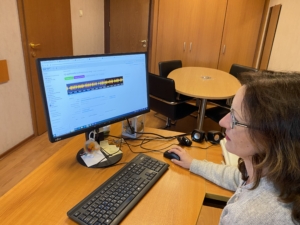
It only takes up to an hour to get trained up in LAPIS as the system is user-friendly. Every person using LAPIS at the BNR has access to their own unique customised interface relevant to their specific role. “We designed the UI to suit all generations to adapt quickly to the technology across a large organisation such as the BNR.” Kamen notes, “Managers can also control and manage where necessary using LAPIS to ensure goals are met and high standards are maintained in the company.”
LAPIS is being used for every requirement across the organisation, and its appeal to the organisation is down to the fact that it is expandable, highly configurable and can implement what they see as the workflow that works best for them, as opposed to dictating a rigid workflow set in stone that might not suit them as many other systems do. LAPIS has enabled the BNR to now develop news material themselves and schedule programmes, news shows, radio schedules and emissions, all within LAPIS.
Other factors that attracted the BNR to adopting LAPIS included its reasonable pricing model and also the fact that Profuz Digital is a reputable Bulgarian company that the BNR can rely on, speak to in their own language and is locally available to help on site. It was key for Profuz Digital to fulfil the BNR’s requirements in every aspect, which included being sensitive to the organisation’s culture and adapting the system to meet these requirements.
Further benefits LAPIS brings to the BNR team is that it works with audio and can automatically transcribe audio files. It also has useful functions such as lightning-speed searching capabilities for material. In addition, it plays a vital role in subtitle creation, where legally required to meet mandatory European laws.
BNR employees can also access LAPIS directly via their mobile phones. Being one single powerful system, LAPIS not only deals with news management at the BNR, but also all the complexities within an organisation’s infrastructure. LAPIS is not only about data management, or traditional Media Asset Management, but also about detailed scheduling and planning that a major evolving radio broadcaster requires.
There have also been new developments in LAPIS regarding security compared to what a traditional MAM system that was built 20 years ago offers, for example. LAPIS is highly secure, and safeguards exterior threats and secures internal defences.
Upcoming AI advancements and future features are in the pipeline. They are not yet available but will include being able to automatically classify genres within texts, news categories, to help speed up manual processes. Another very useful future AI tool soon to be available in LAPIS will be advanced semantic search functionality which finds words and groups of words immediately. LAPIS AI will be able to be used for transcription based on AI image recognition, photos published and so forth.
There are lots of exciting plans in store regarding LAPIS, for example it already is being used for coordinating tasks and managing reporters out on the field. For example a journalist sent to a city to report on an event, will be able to tap in to LAPIS to source transport, equipment and all other logistics required. These can all be arranged using LAPIS to source and coordinate quickly. LAPIS with AI can later also be able to later do the following when and if required: internally as a ticketing system in future, particularly in areas such as resource management, planning, studios, microphones, searches with AI, advanced classification capabilities, assimilation, private data capture, access to Chat GPT functions, instant access to the internet, AI can help improve workflows, speed, data gathering, checking information and no need for laborious manual entry processes. LAPIS is able to advance all of these tasks very fast but still maintaining quality, standards and privacy of data.
AI can later be used within LAPIS to collate statistical information from data, text or images. Due to the open nature of LAPIS, separate AI software technologies and tools can be used in LAPIS.
“We look forward to a long-standing partnership with the BNR and we are proud to support them along the way. With our Profuz LAPIS scheduling tech being successfully received, we are pleased to see positive feedback from everyone using the system there. LAPIS guarantees a future-proof working environment that offers unlimited possibilities. The BNR can request at any time for us to add further options in LAPIS, expand options, and upgrade to AI capabilities when the time is right for them. It is a really exciting period, and the BNR is part of the adventure, as they enter another decade of incredible success ahead of them.” Ivanka says.
“Adopting Profuz LAPIS has been a crucial step in the major digital transformation process of the BNR. An immense volume of content is generated on a daily basis by our 2 national and 9 regional programs, along with 10 of Radio Bulgaria’s foreign language teams. In addition, our team of web editors create a considerable amount of material.” states Program Director of BNR Daniela Kusovska.
“Before we brought LAPIS on board, the vast array of data had become disparate and separated which made it difficult for the various BNR teams to access information and files efficiently. A majority of the content had therefore become inconspicuous and overlooked owing to the inadequate distribution of data flowing between broadcast and digital channels in the BNR system. Working with Profuz LAPIS is now playing a vital role in helping us to invigorate and revolutionise our work processes, particularly in relation to the entire planning, creation and distribution workflow of information. This is really important, not only for our own public mission, but also for professionally maintaining the resources at our disposal responsibly, which LAPIS will effortlessly help us to achieve.”
About Profuz Digital
Profuz Digital develops and provides performance-leading solutions for customisable engineering system integration to empower content providers, broadcast, production, and post-production professionals to operate efficiently at the forefront of an ever-evolving digital environment. Profuz Digital’s primary focus is flexibility, futureproof customer-driven product innovation, fast deployment, along with committed teamwork. Creators of the advanced real-time and offline captioning and subtitling software platform SubtitleNEXT and Profuz Digital’s digital asset workflow management platforms, Profuz LAPIS, designed to efficiently centralise processes and data all under one roof. Proven technology already adopted by the likes of Canal PLUS, Jornal do Centro, Council of Europe, Bulgarian National Radio and many other organisations. The NEXT-TT system combines SubtitleNEXT’s functionalities with Profuz LAPIS into an all-in-one powerful hybrid technology-base that provides media professionals with a versatile backbone for enhanced localization services. NEXT-TT can be customised to produce targeted management and efficient workflows. It manages subtitles, dubbing and localization services for media content including the coordination of teams of translators, subtitlers, AV professionals, creative freelancers, while providing users with powerful toolsets in a secure workspace environment.
www.profuzdigital.com
Discover the power behind Profuz LAPIS here www.profuzlapis.com;
Find out more about SubtitleNEXT at www.SubtitleNEXT.com;
Explore the NEXT-TT platform further at https://subtitlenext.com/product-line/platform/
About the Bulgarian National Radio (BNR)
The Bulgarian National Radio is Bulgaria’s national radio broadcasting organisation. It operates two national and nine regional channels, as well as an international service – Radio Bulgaria – which broadcasts in 11 languages. Public service broadcasting in Bulgaria, is financed mainly through a state subsidy. The subsidy has to be spent on the preparation, creation and the transmission of the national and regional programmes. Its volume is determined annually on the basis of the average programme production costs per hour approved by the Council of Ministers, regardless of the programme type
The BNR operates the following national, regional and international stations:
National
- Horizont: BNR’s most listened-to channel, with round-the-clock news, comment, and music (with the emphasis on modern popular music genres).
- Hristo Botev Radio: covering science and the arts, documentaries and discussions on cultural and social questions, drama, classical music, jazz, and programming for children.
Regional
- Radio Blagoevgrad
- Radio Burgas
- Radio Kardzhali
- Radio Plovdiv
- Radio Shumen
- Radio Sofia
- Radio Stara Zagora
- Radio Varna
- Radio Vidin
International – Radio Bulgaria provides news in Bulgarian and also in Albanian, Romanian, English, French, German, Greek, Russian, Spanish, Serbian and Turkish.
www.bnr.bg/

